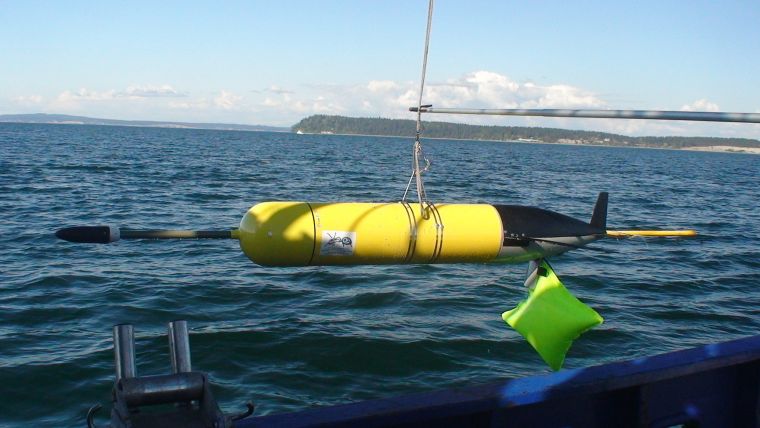Exocetus Autonomous Systems Named Semi-finalist in Shell Ocean Discovery XPRIZE
Team Exocetus has been named one of the 21 semi-finalists in the Shell Ocean Discovery XPRIZE. This marks the latest step in the three-year global competition challenging teams to advance ocean technologies for rapid, unmanned and high-resolution ocean mapping.
Team Exocetus is the team name for Exocetus Autonomous Systems, a small company from Wallingford, CT that produces the Coastal Glider. The Coastal Glider is an extremely efficient mobile subsea sensor platform that can carry a wide variety of sensors for long duration missions at sea. Team Exocetus will deploy several of the vehicles to meet the competition requirements.
Joe Turner, cofounder of Exocetus Autonomous Systems, characterises the competition as really tough from many standpoints. Any one aspect of the competition,whether reaching the depths of the ocean, producing a high resolution map, or capturing inspiring images, would be hard by itself. Combine all of them, and couple them with the truly audacious timeline of the competition, and you end up with the hardest challenge we could ever think of facing.
Mapping Challenge
During Round 1 of the Competition, teams will deploy their entries to operate at a depth of 2,000 metres, aiming to map at least 20 percent of the 500 square kilometres of the competition area at five metres resolution, identifying and imaging at least five archeological, biological or geological features at any depth – all within 16 hours. In other words, the Competition technologies will aim to reach depths deeper than the Grand Canyon and map an area that is nearly five times the area of Paris.
Up to 10 finalist teams will be selected to proceed past Round 1 and will split a USD1M milestone prize purse. In Round 2, they will need to operate their entries at a depth of 4,000 metres, aim to map at least 50 percent of the 500 square kilometres competition area at five metres resolution, identifying and imaging at least ten archeological, biological or geological features at any depth, all within 24 hours.
At the end of the competition, a USD4M Grand Prize and USD1M Second Place Prize will be awarded to the teams that receive the top scores for demonstrating the highest resolution seafloor mapping, after meeting all minimum requirements for speed, autonomy and depth.
As part of the total USD7M prize purse, Exocetus will also be competing for the National Oceanic and Atmospheric Administration (NOAA) USD1M bonus prize and will need to demonstrate that their technology can ‘sniff out’ a specified object in the ocean by tracing a biological and chemical signal to its source.
Team Exocetus’ progress can be followed through their website, Facebook page or Twitter account. Whoever want to get involved with the team is requested to each out to [email protected]. Anyone interested in sponsoring the team, please reach out to [email protected].

Value staying current with hydrography?
Stay on the map with our expertly curated newsletters.
We provide educational insights, industry updates, and inspiring stories from the world of hydrography to help you learn, grow, and navigate your field with confidence. Don't miss out - subscribe today and ensure you're always informed, educated, and inspired by the latest in hydrographic technology and research.
Choose your newsletter(s)
























